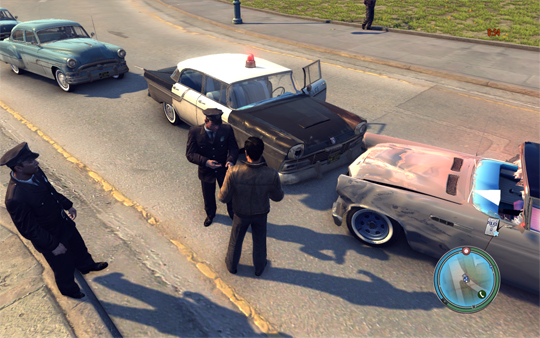
When Grand Theft Auto III arrived back in 2001, an unspoken rule appeared in the world of videogames. A rule that made it mandatory for every open-world game to have as much varied content and things for players to do throughout the environment as possible. It has become a formula for these types of games to feature several different types of jobs, tasks, and side-missions in addition to the story and give the player a sense of freedom. But having a ton of content to explore can actually prove to be a massive distraction from the story in these games. They have the potential to lose their focus and fail to fully engage players in a strong narrative. With this in mind, perhaps it’s time to re-imagine the open world and have the focus put on immersion instead of content.
When most people hear that a game features an open world, the first question they think of asking is, "OK, what can you do in it?" This is because games like Grand Theft Auto IV, Red Dead Redemption, Crackdown, and Spider-Man 2 have made open-world games into sandbox funfests of simply running around, doing whatever you feel, and having a fair share of options in gameplay. Seeing how many cars you can blow up, finding strangers, doing races, beating up small-time crooks, and other odd-jobs have given players a content overload. This is mainly due to the demand put on developers that they give their customers the most bang for their buck. Though a ton of content to play around with in a game is great, it simply becomes a distraction from the story. Sometimes it even forces the narrative to take the back seat completely.
This formula for creating an open-world game seemed to be the only way to create one that is considered both profitable and of good quality. That is until a month ago, when 2K Czech dared to mix things up with Mafia II. The game took an open world, Empire Bay, and instead of making it a hub for crazy gameplay options it served as a massive environment meant solely to immerse the player in its setting while enjoying a thrilling and engaging mob narrative. Players are constantly reminded to return to the story with the current mission highlighted by a waypoint and red path in the game’s map and radar. There are no strangers to help, no races to run, just a city filled with people set in the proper time period to give the player a sense of belonging and attachment.
Some reviewers complained that this limited the game’s value regarding replayability and that Empire Bay only created boring sessions where players drove from cutscene to cutscene or action sequence to action sequence. But if you really listened to the radio stations as you drove, watched the people on the street, and soaked in the mid-20th-century American atmosphere, the city felt alive. It allowed a player to feel grounded, like he or she was in a real place instead of boxed-in maps designed solely for the action. Add to this the fact that Mafia II had fair review scores overall and what will likely be profitable sales (The game was the top-selling title in the UK for the first three weeks of its release), and it would seem that games featuring an open world should consider changing up their former tried-and-true formula.

While Mafia II completely eliminates side-missions, not all future open-world games should do the same. What would be nice to see is more of these titles doing a combination of the variety that comes in most open-world games and a strong emphasis and focus on story. The main portion of the game could be handled just like Mafia II, where the player is guided and driven to complete the story. The player will have the option of collecting money through simple odd jobs like stealing cars, holding up stores, and other minor tasks that won’t take away from the narrative. There can also be options like upgrading cars, purchasing clothing and jewelry, and perhaps items to add to the protagonist’s home. This will keep the focus on the story while still offering a taste of gameplay variety.
When the narrative is completed, that can be the time when side missions and other gameplay options come in as end-game rewards. Players will be able to get the extra content for their money’s worth this way while not having the focus taken off of the story. In addition, a well-integrated multiplayer mode can add even more value and enjoyment for the player without hindering the single-player narrative.
This is not a demand or decree that all open-world games should change and conform to a formula similar to Mafia II. It is not even an outcry that these titles are all boring and cannot tell a great story. This is simply an acknowledgement that Mafia II has found a new way to make a successful open-world game by putting more emphasis on story instead of content variety. It is a simple proposal, one that suggests developers and publishers looking to make open world games see what was done by 2K Czech and use it as an example to question what an open world game is or can be.

















